
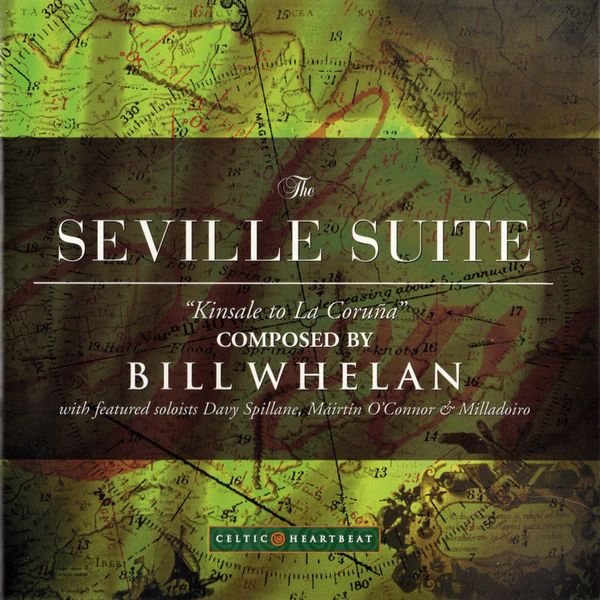 |
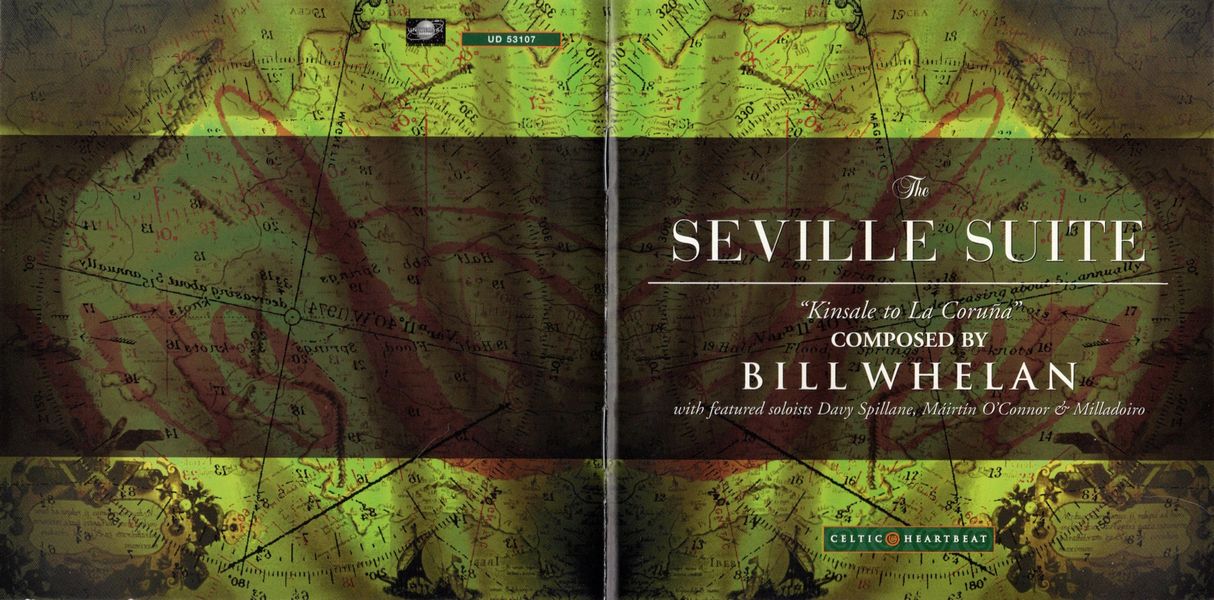
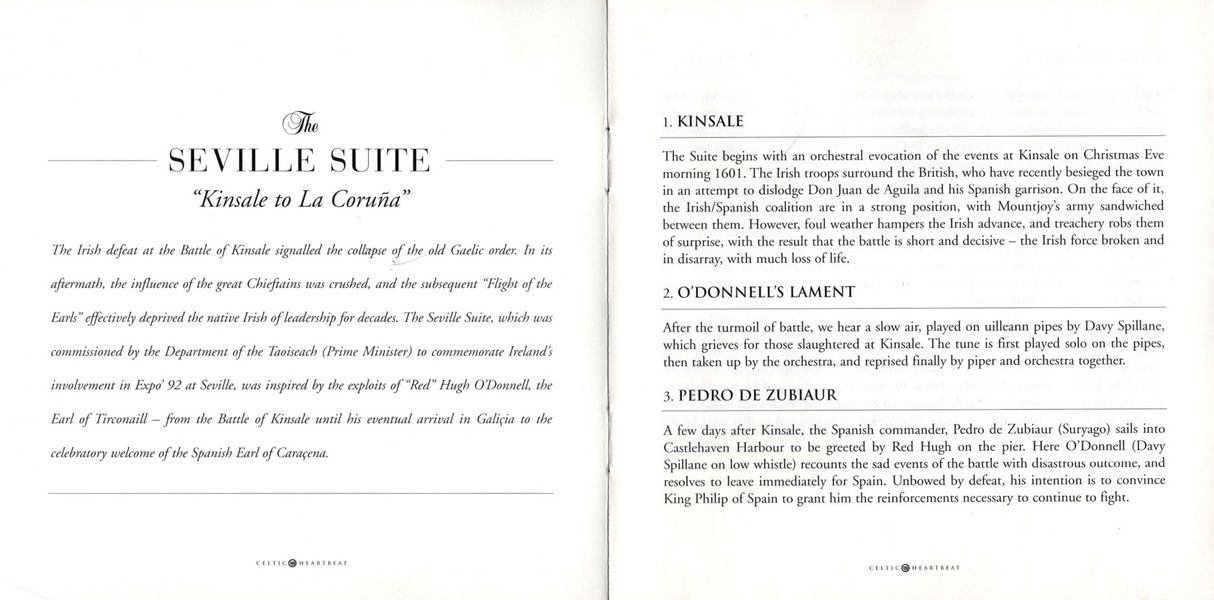
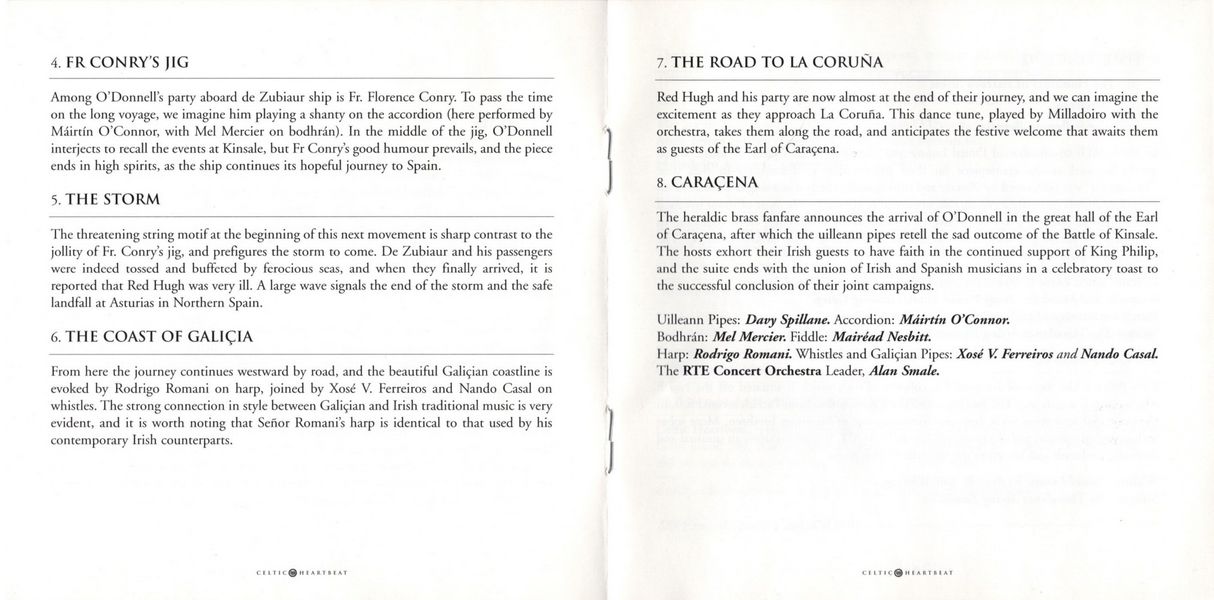
|
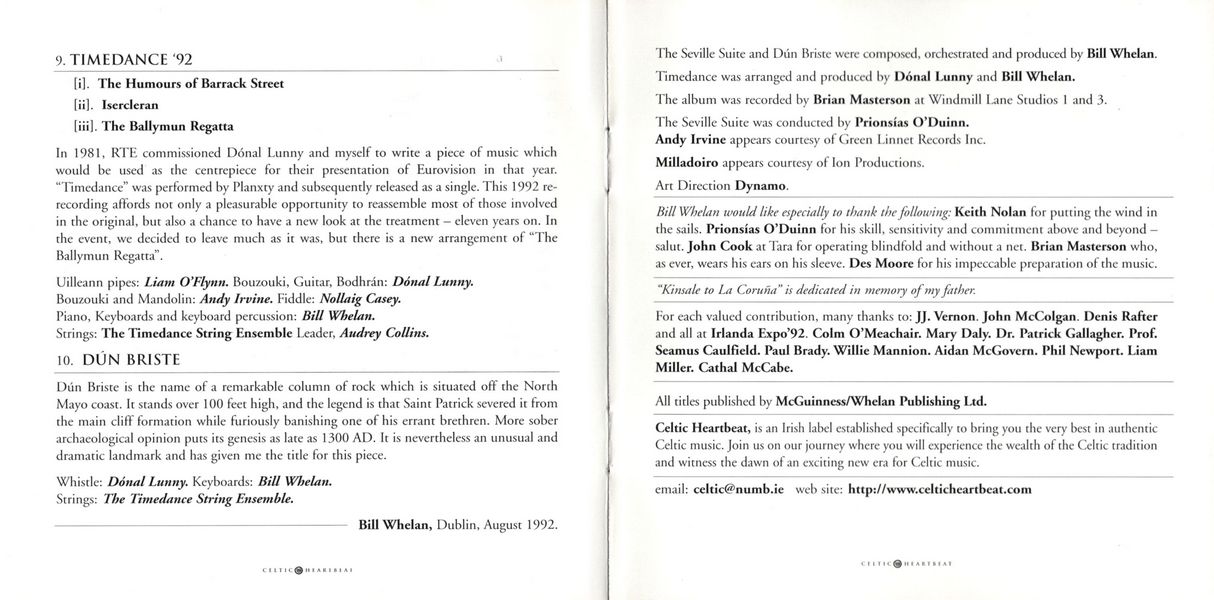
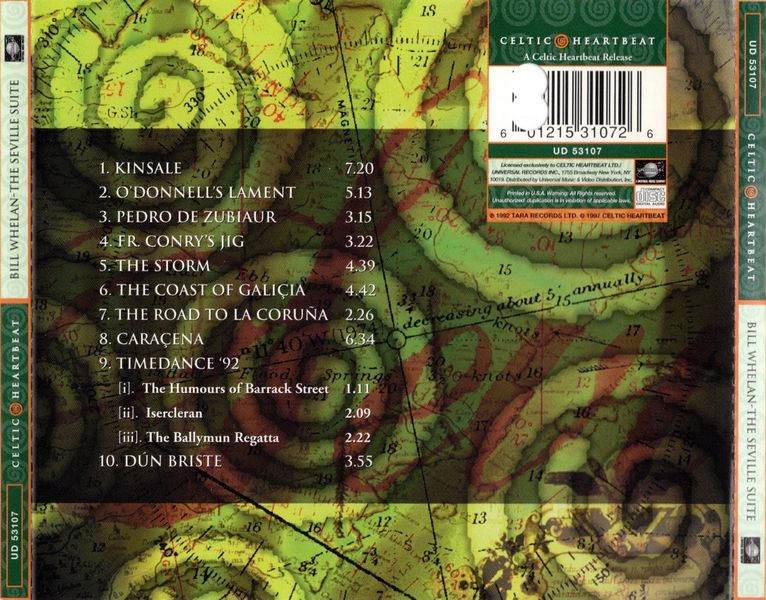
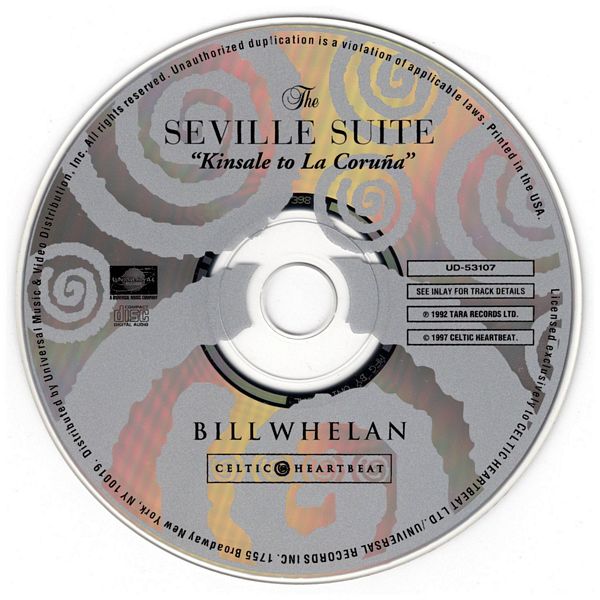
|
Sleeve Notes
The Irish defeat at the Battle of Kinsale signalled the collapse of the old Gaelic order. In its aftermath, the influence of the great Chieftains was crushed, and the subsequent "Flight of the Earls" effectively deprived the native Irish of leadership for decades. The Seville Suite, which was commissioned by the Department of the Taoiseach (Prime Minister) to commemorate Ireland's involvement in Expo' 92 at Seville, was inspired by the exploits of "Red" Hugh O'Donnell, the Earl of Tirconaill — from the Battle of Kinsale until his eventual arrival in Galiçia to the celebratory welcome of the Spanish Earl of Caraçena.
KINSALE — The Suite begins with an orchestral evocation of the events at Kinsale on Christmas Eve morning 1601. The Irish troops surround the British, who have recently besieged the town in an attempt to dislodge Don Juan de Aguila and his Spanish garrison. On the face of it, the Irish/Spanish coalition are in a strong position, with Mountjoy's army sandwiched between them. However, foul weather hampers the Irish advance, and treachery robs them of surprise, with the result that the battle is short and decisive — the Irish force broken and in disarray, with much loss of life.
O'DONNELL'S LAMENT — After the turmoil of battle, we hear a slow air, played on uilleann pipes by Davy Spillane, which grieves for those slaughtered at Kinsale. The tune is first played solo on the pipes, then taken up by the orchestra, and reprised finally by piper and orchestra together.
PEDRO DE ZUBIAUR — A few days after Kinsale, the Spanish commander, Pedro de Zubiaur (Suryago) sails into Castlehaven Harbour to be greeted by Red Hugh on the pier. Here O'Donnell (Davy Spillane on low whistle) recounts the sad events of the battle with disastrous outcome, and resolves to leave immediately for Spain. Unbowed by defeat, his intention is to convince King Philip of Spain to grant him the reinforcements necessary to continue to fight.
FR CONRY'S JIG — Among O'Donnell's party aboard de Zubiaur ship is Fr. Florence Conry. To pass the time on the long voyage, we imagine him playing a shanty on the accordion (here performed by Máirtín O Connor, with Mel Mercier on bodhrán). In the middle of the jig, O'Donnell interjects to recall the events at Kinsale, but Fr Conry's good humour prevails, and the piece ends in high spirits, as the ship continues its hopeful journey to Spain.
THE STORM — The threatening string motif at the beginning of this next movement is sharp contrast to the jollity of Fr. Conry's jig, and prefigures the storm to come. De Zubiaur and his passengers were indeed tossed and buffeted by ferocious seas, and when they finally arrived, it is reported that Red Hugh was very ill. A large wave signals the end of the storm and the safe landfall at Asturias in Northern Spain.
THE COAST OF GALIÇIA — From here the journey continues westward by road, and the beautiful Galiçian coastline is evoked by Rodrigo Romani on harp, joined by Xosé V. Ferreiros and Nando Casal on whistles. The strong connection in style between Galiçian and Irish traditional music is very evident, and it is worth noting that Señor Romani's harp is identical to that used by his contemporary Irish counterparts.
THE ROAD TO LA CORUÑA — Red Hugh and his party are now almost at the end of their journey, and we can imagine the excitement as they approach La Coruña. This dance tune, played by Milladoiro with the orchestra, takes them along the road, and anticipates the festive welcome that awaits them as guests of the Earl of Caraçena.
CARAÇENA — The heraldic brass fanfare announces the arrival of O'Donnell in the great hall of the Earl of Caraçena, after which the uilleann pipes retell the sad outcome of the Battle of Kinsale. The hosts exhort their Irish guests to have faith in the continued support of King Philip, and the suite ends with the union of Irish and Spanish musicians in a celebratory toast to the successful conclusion of their joint campaigns.
TIMEDANCE 92
[i] The Humours of Barrack Street
[ii] Isercleran
[iii] The Ballymun Regatta
In 1981, RTE commissioned Dónal Lunny and myself to write a piece of music which would be used as the centrepiece for their presentation of Eurovision in that year. "Timedance" was performed by Planxty and subsequently released as a single. This 1992 rerecording affords not only a pleasurable opportunity to reassemble most of those involved in the original, but also a chance to have a new look at the treatment — eleven years on. In the event, we decided to leave much as it was, but there is a new arrangement of "The Ballymun Regatta".
DÚN BRISTE — Dún Briste is the name of a remarkable column of rock which is situated off the North Mayo coast. It stands over 100 feet high, and the legend is that Saint Patrick severed it from the main cliff formation while furiously banishing one of his errant brethren. More sober archaeological opinion puts its genesis as late as 1300 AD. It is nevertheless an unusual and dramatic landmark and has given me the title for this piece.
Bill Whelan, Dublin, August 1992.
Bill Whelan would like especially to thank the following: Keith Nolan for putting the wind in the sails. Prionsías O'Duinn for his skill, sensitivity and commitment above and beyond — salut. John Cook at Tara for operating blindfold and without a net. Brian Masterson who, as ever, wears his ears on his sleeve. Des Moore for his impeccable preparation of the music.
"Kinsale to La Coruña" is dedicated in memory of my father.
For each valued contribution, many thanks to: JJ. Vernon. John McColgan. Denis Rafter and all at Irlanda Expo'92. Colm O'Meachair. Mary Daly. Dr. Patrick Gallagher. Prof. Seamus Caulfield. Paul Brady. Willie Mannion. Aidan McGovern. Phil Newport. Liam Miller. Cathal McCabe.